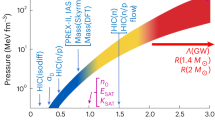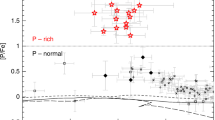Abstract
THE application of the theory of ionisation to stellar spectra by Saha and others has led to estimates of the temperature of the reversing layers of stars. It is shown by Fowler and Milne (Mon. Not. R.A.S., 83, 7, 415) that the effective temperature at a given point in the stellar sequence may be deduced, on certain assumptions, from the knowledge that a line of known series relations there reaches its maximum intensity. For stars of type earlier than Ao the lines available for such estimates are those associated with Si+++, He, and C+. The intensities of these lines have recently been measured on a number of objective prism spectra at the Harvard College Observatory.
This is a preview of subscription content, access via your institution
Access options
Subscribe to this journal
Receive 51 print issues and online access
$199.00 per year
only $3.90 per issue
Buy this article
- Purchase on Springer Link
- Instant access to full article PDF
Prices may be subject to local taxes which are calculated during checkout
Similar content being viewed by others
Author information
Authors and Affiliations
Rights and permissions
About this article
Cite this article
PAYNE, C. On the Spectra and Temperatures of the B Stars. Nature 113, 783–784 (1924). https://doi.org/10.1038/113783a0
Issue Date:
DOI: https://doi.org/10.1038/113783a0
Comments
By submitting a comment you agree to abide by our Terms and Community Guidelines. If you find something abusive or that does not comply with our terms or guidelines please flag it as inappropriate.



